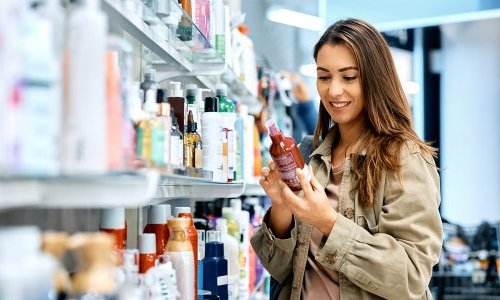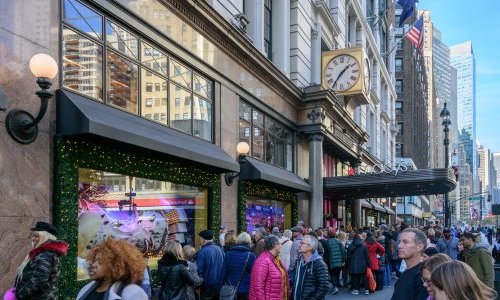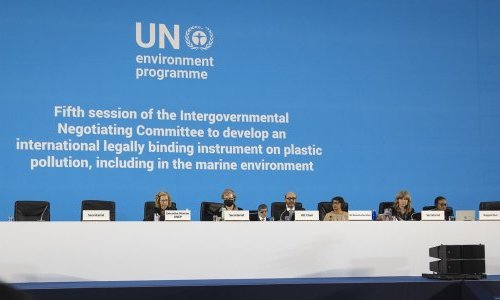How did the idea for The Colors platform come about?
Haweya Mohamed - The idea for The Colors project was born out of an observation: the products and services offered by large corporations do not fully satisfy the aspirations of multicultural consumers. Today, in the world’s largest consumer market, the United States, 40% of people identify as Latino, Black or Asian, according to the official figures of the United States Census Bureau. These "minority-majority" groups are expected to make up more than 50% of the North American population by 2045, as is already the case in most major cities such as New York and San Francisco. Culturally, we don’t do this type of demographic count in Europe. However, whether you are in London, Paris, Berlin or Brussels, you can’t help but notice that the consumers in the major shopping areas are clearly multicultural.
And what about the 1.2 billion Africans, who will soon be 2 billion, with a constantly growing purchasing power?
The Colors is therefore first and foremost about the desire to address these consumer markets by accompanying brands that want to better understand and serve these consumers, but also by accelerating startups that are targeting these markets 100%.
What is the aim of The Colors?
Haweya Mohamed - Our intention is for The Colors is to become the platform of reference for decision-makers seeking expertise in how to address these markets. It also aims to contribute to advancing the subject of diversity and inclusion in the domaines of fashion and beauty, and to support entrepreneurs who address multicultural populations or who promote skills and expertise of the African continent.
The platform brings together experts such as Desiree Reid, who launched Iman Cosmetics; Jackie Celestin, who for a long time was Chief of Diversity at L’Oréal; Noelly Michoux, who recently raised money for her startup 4.5.6 Skin, and many others. It also brings together consumers who are very demanding when it comes to diversity issues and who interact with the entrepreneurs.
The mantra of The Colors is "Diversity is a fact. Inclusion is a choice." Do you think today’s fashion and beauty brands are inclusive?
Haweya Mohamed - Diversity is not an aspiration or assertion, it is a statistical fact. As for inclusion, it is an economic choice that consists simply in wanting to sell to more people. In the future, given the numbers cited above, it will be a matter of "being able to sell at all."
My feeling is that brands that don’t deal with the reality of consumer diversity will disappear, or at least their influence will be considerably reduced. So basically, it’s not a problem for anyone but themselves. The startups we work with are "multicultural natives" and moreover are 100% digital. The challenge for traditional brands faced with Digitally Native Vertical Brands, for example, is not to miss the opportunity for a multicultural transformation, just as they should not have missed the opportunity for a digital transformation — or else they will be disappointed. The most successful brands are inclusive: Nike, Ulta Beauty, H&M, Zalando, Mented Cosmetics, Estée Lauder... For the others, there is still work to be done, because for many marketing and communication decision-makers, embracing multiculturalism will mean leaving their cultural comfort zone.
Why is it still difficult today to find hair products, creams, or makeup for all skin tones or all hair types?
Haweya Mohamed - The problem starts at the laboratory level. Do they work on all skin types? Do the people in charge feel sufficiently concerned by the subject of diversity to create formulas adapted to skin types 4, 5 or 6? The answer lies in the number of laboratories dedicated to this type of formulation. Of course, there is also the question of distribution.
With The Colors, the goal is to promote the creations and know-how of African entrepreneurs in the fashion and beauty sectors. What are the obstacles the most frequently face?
Haweya Mohamed - The Colors wants to celebrate diversity through entrepreneurial successes without focusing too much on the known obstacles — lack of visibility, little or no access to retail, and of course little funding. With The Colors, we also want to promote the African agricultural sector. When we talk about natural products such as shea, coconut oil, ylang-ylang and argan, or textile fibers such as organic cotton, we’re just talking about agriculture. Promoting the fashion and beauty sectors also allows us to have more impact on employment and women’s agricultural entrepreneurship.
How do you support them as they develop their brands?
Haweya Mohamed - Our main means of action are our community of experts, the digital expertise of the Afrobytes community at the service of The Colors community, and our visibility. Then there’s matchmaking, which is in our DNA. The strength of Afrobytes is its ability to bring together communities on three continents: Europe where we are based, the United States where our main tech partners are, and finally Africa where we have been supporting entrepreneurs for years.
New brands could change the game, but shouldn’t the giants in these sectors do something too?
Haweya Mohamed - Large companies often focus on the acquisition of growing brands, but they should, I think, ask themselves: do I have people in-house who can help me understand what’s going on and develop products that meet specific needs? A recent study done in the US revealed that multicultural consumers drove the growth of beauty products in 2020. It is important to note that multicultural consumers are increasingly paying attention to who makes and sells the brands and products they buy. It’s up to brands and retailers to meet the needs of these consumers.
Can the arrival of Gen Z in this market help make the fashion and beauty industries more inclusive?
Haweya Mohamed - Gen Z is an inherently multicultural segment of the global population. Many brands have yet to figure out how to effectively address Millennials, let alone Gen Z, which presents an even bigger marketing hurdle. But understanding Gen Z is about understanding multicultural consumers!
In an ideal scenario, how will these two industries evolve over the next 10 years?
Haweya Mohamed - There’s a study I often quote, which was done by Nielsen analysts in the US, which says the following to the big brands: “if you don’t have a multicultural strategy for your brand, chances are you won’t have a brand in the next 10 years. Multicultural consumers are the fastest growing consumer segment in the US, so it’s important to make a cultural connection with them.”





























